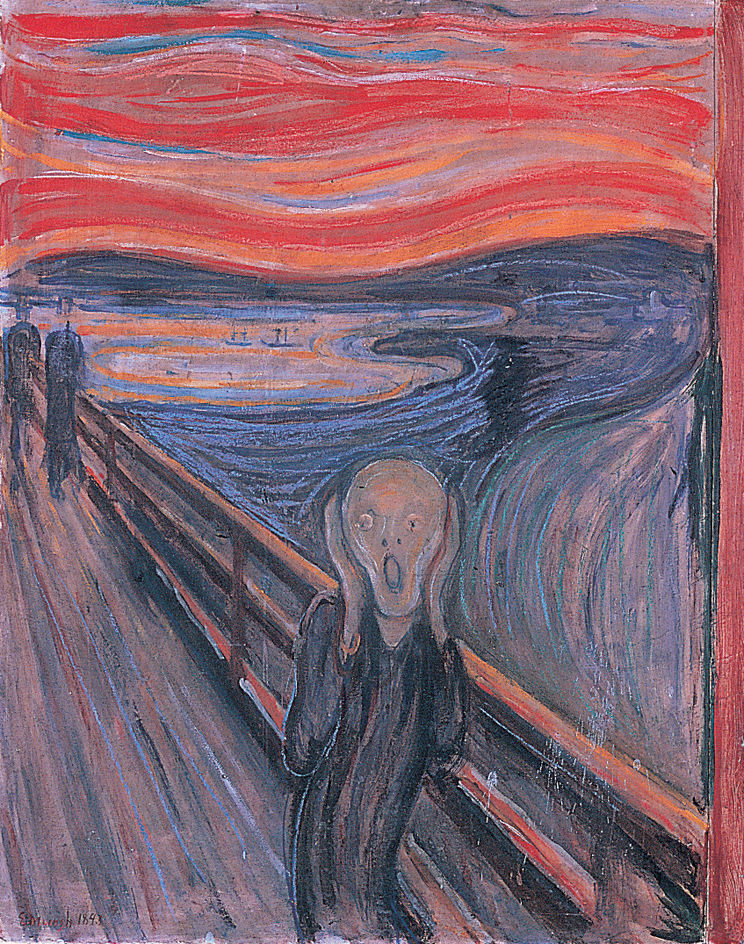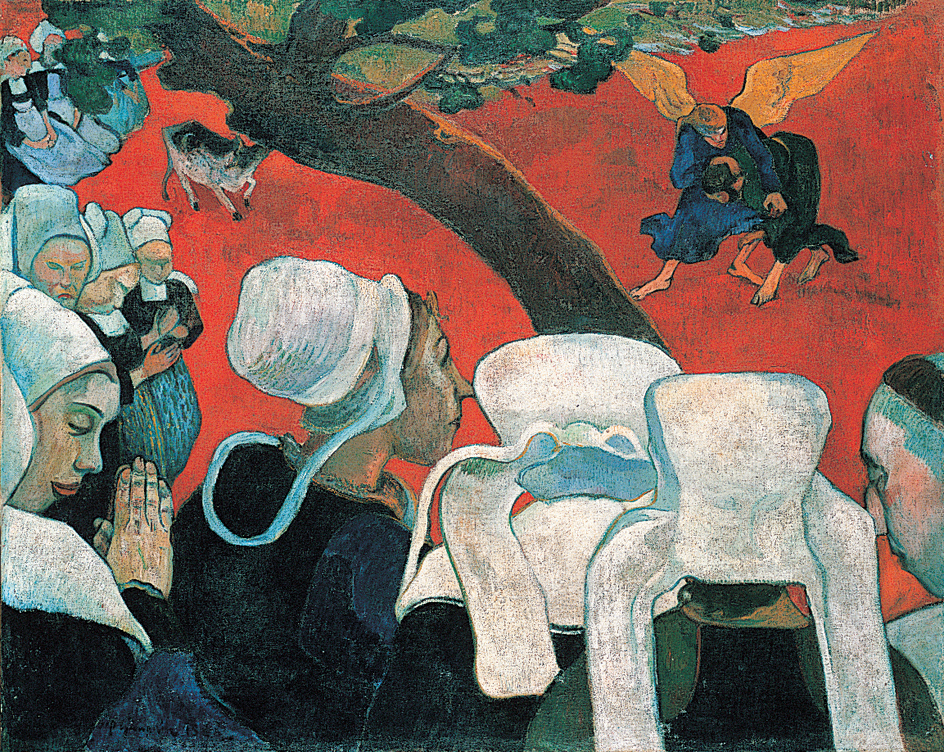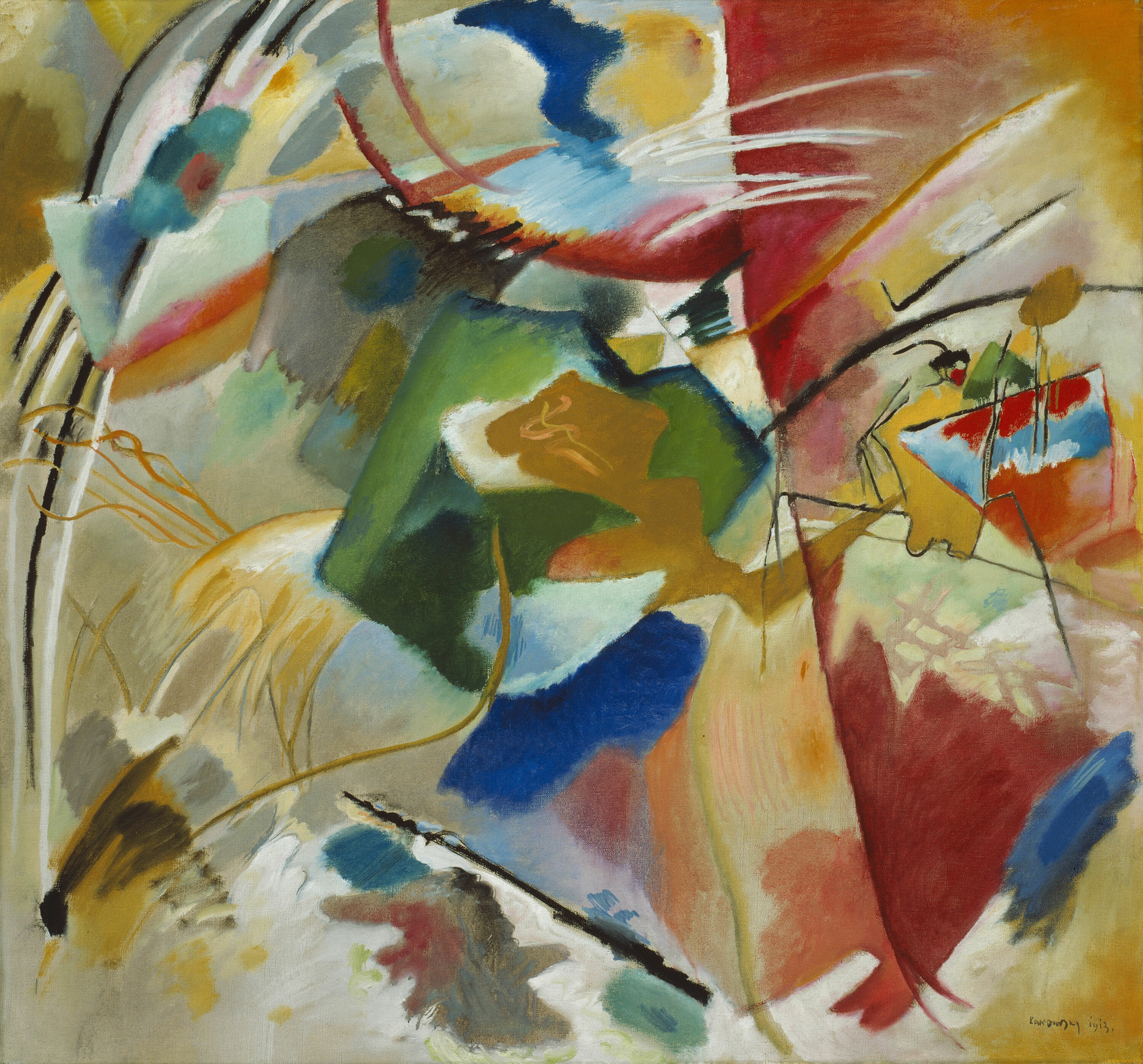Expressionism was an art movement that flourished in the early 1900’s. Art critics invented the term to describe a style of painting which developed from, and in reaction to, the kind of painting called Impressionism. Impressionist painters were mainly concerned with how the surface of objects appeared to the eye at a particular moment. Expressionists tried to give form to their strong inner feelings. They tried to portray life as modified and distorted by their personal interpretation of reality. To them, truth or beauty was in the mind and the soul, not in the eye. See Impressionism ; Postimpressionism .
The emotional range of Expressionist art encompasses both intense joy and deep despair. Expressionist imagery accordingly may be either bright and ecstatic or dark and painful. Vincent van Gogh’s The Starry Night is a good example of a joyful Expressionist work. Van Gogh deliberately distorted the size and appearance of the heavenly bodies, using vivid colors and energetic, swirling brushstrokes. The painting is an expression of van Gogh’s highly personal experience of the star-filled night sky, rather than a simple record of how such a sky appears to the observant eye. The rapturous excitement of the painting is primarily the product of van Gogh’s mind and emotions. Edvard Munch’s painting The Scream, with its image of intense anxiety and alienation, represents the darker side of Expressionism.

Expressionist painting.
Elements of Expressionism can be traced at least as far back as the Spanish painter El Greco in the early 1600’s. The Expressionist movement itself began in the late 1800’s. Its leading figures were van Gogh of the Netherlands, Munch of Norway, Paul Gauguin of France, and James Ensor of Belgium.

The first group organized to promote the Expressionist idea was called Die Brucke (The Bridge). It flourished in Germany from 1905 to 1913. Emil Nolde and Ernst Ludwig Kirchner were two of its best-known members. A later and more influential group was called Der Blaue Reiter (The Blue Rider). It included Wassily Kandinsky of Russia, Paul Klee of Switzerland, and Franz Marc of Germany. Through its paintings and writings, Der Blaue Reiter influenced the work of many artists, especially Georges Rouault of France, Marc Chagall of Russia, Max Beckmann and George Grosz of Germany, and Oskar Kokoschka of Austria. See Painting (Expressionism) .

Expressionist writing,
especially drama, flourished in the early 1900’s. Expressionist playwrights were influenced by the dramatic forms and stage techniques made popular by August Strindberg of Sweden. Expressionist drama first developed as a movement in Germany. Its influence spread, reaching its height after World War I in the plays of Ernst Toller, Frank Wedekind, Georg Kaiser, and Josef and Karel Čapek. In the United States, the plays of Elmer Rice, Eugene O’Neill, and others show the influence of Expressionism.
Characters in Expressionist drama tend to be one-sided, standing for single ideas and attitudes. They are placed in situations in which the objects of the outer world are distorted to reveal the tortured minds of the characters or the dramatist. Playwrights achieved these effects with symbolic settings, bizarre lighting, and nonrealistic acting. See Drama (Modern drama: Ibsen to World War II) .
Expressionist drama often showed the influence of modern psychology by reflecting the inner frustrations of the dramatist. Many plays showed characters in the grip of fear and other violent emotions. Some playwrights, influenced by the philosophy of Karl Marx, criticized the evils they saw in society.
The influence of Expressionism can also be seen in the fiction of the German-Czech author Franz Kafka and in some German poetry of the early 1900’s. Although Expressionism is no longer a specific movement, its aims and methods may still be found in much contemporary drama and art.
